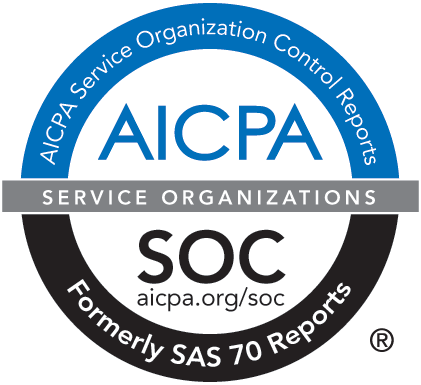Four Tax Strategies to Maximize Your Giving
December 8, 2023 - It may be the first week of December, but it’s not too late to meet your philanthropic goals while realizing some tax savings. Here are four strategies you can employ before December 31st to amplify your giving this year.
1. THINK BEYOND CASH
While most donations to charity are made by cash or check, there are significant tax advantages to donating appreciated noncash assets. Now is the time to consider all the assets you own to determine which will maximize your charitable impact.
Avoid capital gains tax exposure
Publicly traded securities that have been held for over a year can be donated to charity at fair market value, and the amount deducted can be up to 30% of your adjusted gross income (AGI). Additionally, when donated directly to charity, these assets are not subject to the capital gains tax that would be incurred if the assets were sold. Avoiding exposure to this tax increases your tax savings and the amount available to donate to charity. Restricted or privately-held securities may be deductible as well, but with particular limitations.
Rebalance your stock portfolio
If you receive compensation in the form of company stock and are looking to reduce your exposure to that company, you can gift those shares to charity. Similarly, if you need to rebalance your stock portfolio, you can donate your appreciated securities, rather than sell them. In these cases, donating publicly traded securities can help you meet both your investment and philanthropic goals.
Give complex assets
Many illiquid gifts, when donated, earn the same tax advantages described above; they can be donated to charity at fair market value and are not subject to capital gains tax. While there are advantages to giving your complex assets, whether real estate, mineral interests, cryptocurrency, fine art, collectibles, or intellectual property, these assets do have additional requirements. HighGround’s legal, real estate, and minerals management teams can help you navigate the gifting of complex assets.
2. GIVE A QCD
At age 73, individuals must begin taking an annual required minimum distribution (RMD) from their tax-deferred retirement accounts. Required minimum distributions are treated as taxable income to the individual. The IRS allows individuals 70 ½ years or older to make distributions from their retirement account directly to a charitable organization. These distributions, known as qualified charitable distributions (QCDs), are excluded from the donor’s taxable income but may count toward their required minimum distributions (up to $100,000 per individual in 2023). Additionally, the QCD is not reported as income nor as a deduction and does not count against the donor’s charitable limits. Thus, a QCD offers a tax-advantaged way to maximize your charitable giving during retirement while lowering your adjusted gross income and satisfying the required minimum distribution set by the IRS.
New legislation
Previously, a QCD had to go directly from the IRA to a qualified charity. But the SECURE Act 2.0 that was signed into law at the end of 2022 now allows an individual a one-time opportunity to use a QCD to fund a Charitable Remainder Trust (CRT) or a Charitable Gift Annuity (CGA). A QCD to establish a CRT or CGA is limited to a maximum of $50,000 (indexed for inflation) per IRA owner and can be broken into smaller distributions, as long as they are all transferred in the same year. If you’re interested in establishing a trust or annuity with a QCD, the HighGround legal team can walk you through the additional rules surrounding this new allowance.
3. BUNDLE YOUR GIVING
Charitable bundling, or bunching, is a giving strategy for those who no longer itemize every year. Bundling enables donors to increase their charitable contributions and itemize gifts every few years, while taking the standard deduction in other years. It helps them maximize their total tax savings over time by front-end loading their giving.
Imagine a donor gives $20,000 to charity each year and takes the standard deduction. Their standard deduction amounts would be $25,900 and $27,700 in 2022 and 2023, respectively, for a total 2-year deduction of $53,600. If, instead, that donor contributed $40,000 in 2022 and $0 in 2023, he would have met the threshold to itemize his deductions in 2022 and could take the full $40,000 deduction, then take the standard deduction in 2023 of $27,700. In this example, charitable bundling allows for a greater 2-year deduction of $67,700, $14,100 more than without bundling.
Obviously, this strategy requires the financial capacity to give multiple years’ worth of contributions in a single year. For this reason, it may be particularly appealing to those who experience a financial windfall.
4. CONSIDER A DAF
A donor-advised fund (DAF) is a charitable giving account sponsored by a public charity, like HighGround, and funded by a donor’s tax-deductible contributions. Those contributions are invested and have the potential to grow, tax-free. Donors retain the right to recommend grants over time from their DAFs to eligible charities of their choice.
In addition to the tax-free growth, there are a few key reasons to consider using a DAF:
- You can use a DAF to facilitate the charitable bundling strategy described above.
- If the charity you wish to benefit is unable to receive gifts of complex assets, those can be donated to a DAF and then granted to the charity.
- A DAF allows you to qualify for a charitable deduction while giving you more time to decide which charities to benefit.
- Your charitable deductions are based on your contributions into the fund and not the grants out of the fund. If you funnel all your charitable giving through your DAF, your annual DAF tax receipt will be all you need when it’s time to file your taxes.
As you look to maximize the impact of your generosity while giving in a tax-advantageous way, if you’d like to learn more about any of these strategies, contact our Client Partner Communications Specialist at 214-978-3303 today.


